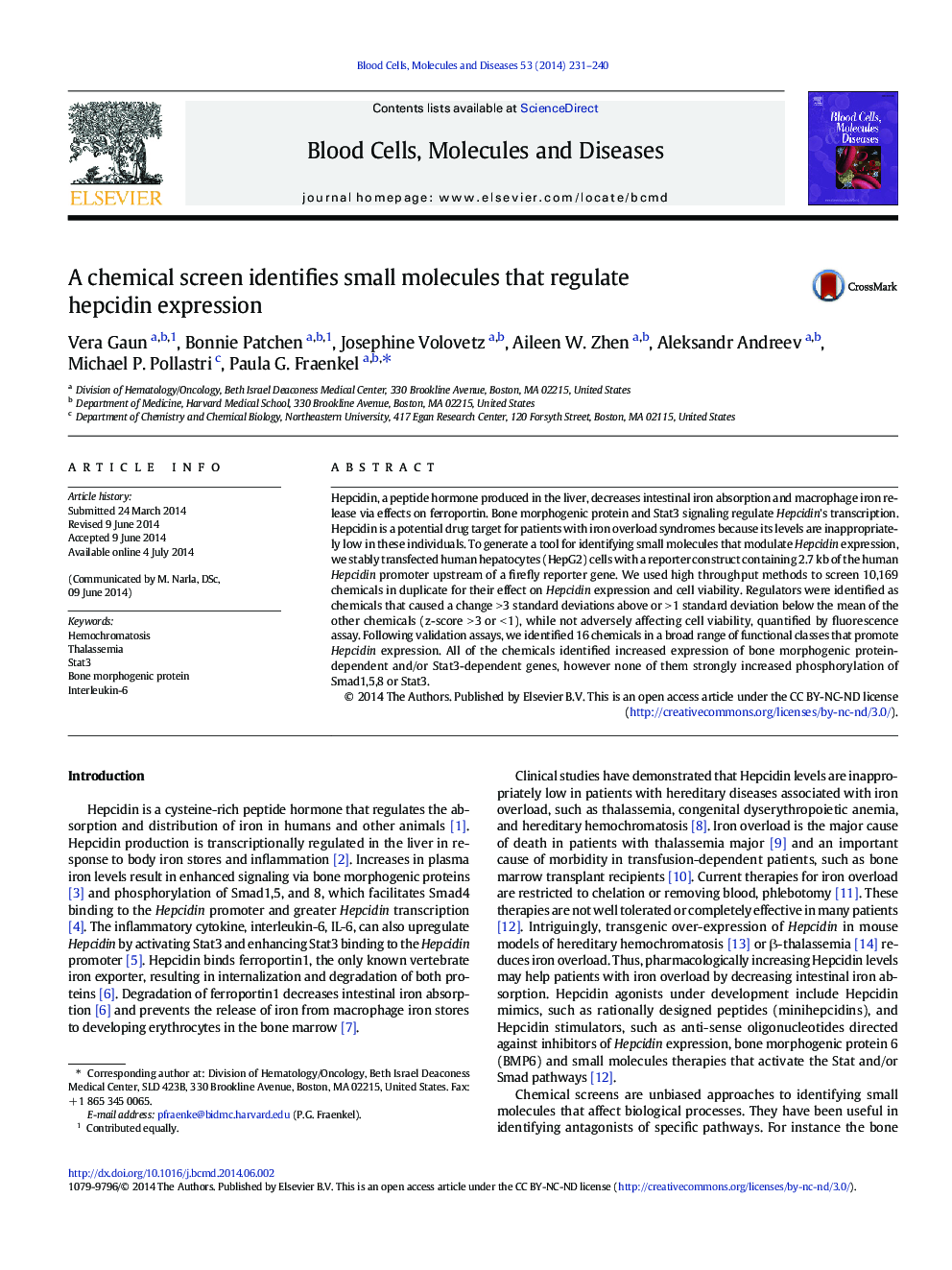| Article ID | Journal | Published Year | Pages | File Type |
|---|---|---|---|---|
| 5913455 | Blood Cells, Molecules, and Diseases | 2014 | 10 Pages |
Abstract
Hepcidin, a peptide hormone produced in the liver, decreases intestinal iron absorption and macrophage iron release via effects on ferroportin. Bone morphogenic protein and Stat3 signaling regulate Hepcidin's transcription. Hepcidin is a potential drug target for patients with iron overload syndromes because its levels are inappropriately low in these individuals. To generate a tool for identifying small molecules that modulate Hepcidin expression, we stably transfected human hepatocytes (HepG2) cells with a reporter construct containing 2.7Â kb of the human Hepcidin promoter upstream of a firefly reporter gene. We used high throughput methods to screen 10,169 chemicals in duplicate for their effect on Hepcidin expression and cell viability. Regulators were identified as chemicals that caused a change >Â 3 standard deviations above or >Â 1 standard deviation below the mean of the other chemicals (z-score >Â 3 or <Â 1), while not adversely affecting cell viability, quantified by fluorescence assay. Following validation assays, we identified 16 chemicals in a broad range of functional classes that promote Hepcidin expression. All of the chemicals identified increased expression of bone morphogenic protein-dependent and/or Stat3-dependent genes, however none of them strongly increased phosphorylation of Smad1,5,8 or Stat3.
Related Topics
Life Sciences
Biochemistry, Genetics and Molecular Biology
Molecular Biology
Authors
Vera Gaun, Bonnie Patchen, Josephine Volovetz, Aileen W. Zhen, Aleksandr Andreev, Michael P. Pollastri, Paula G. Fraenkel,
